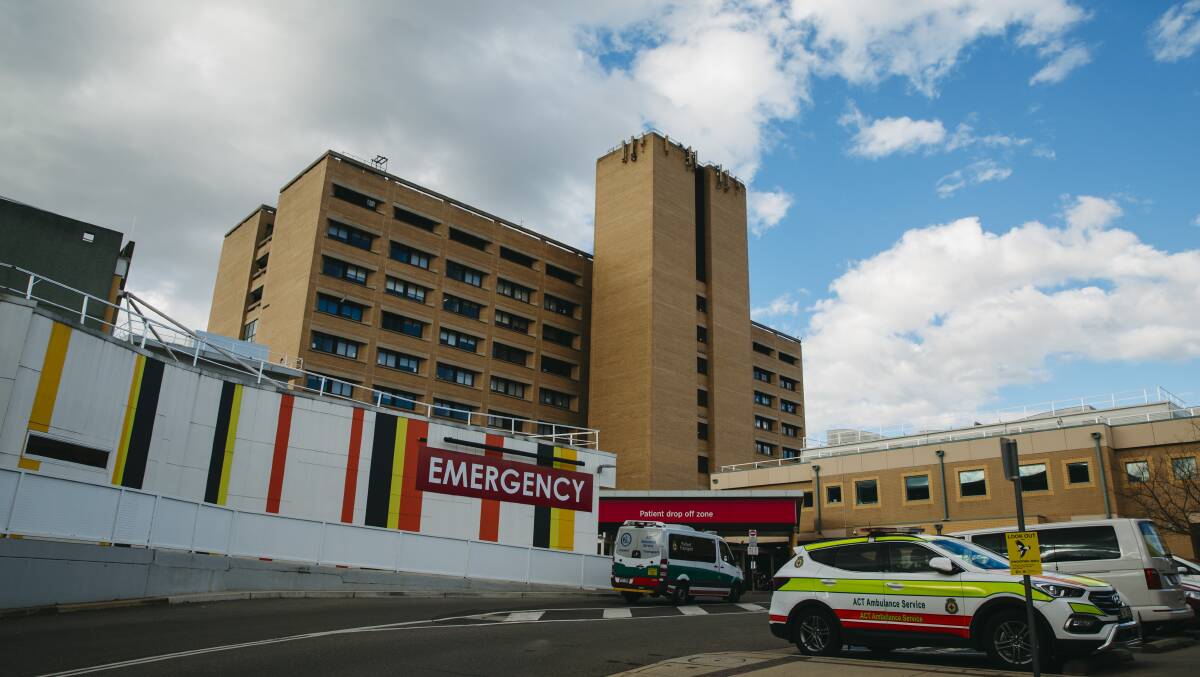
Canberra's nurses faced extraordinary pressure during the recent Omicron outbreak as staffing shortages meant almost 3000 shifts needed to be filled.
Nurses were bombarded with text messages, seen by The Canberra Times, offering overtime and extra shifts as Canberra's COVID case numbers rapidly escalated.
The health system will be under further pressure as it attempts to make up for elective surgeries missed due to the COVID pandemic.
The ACT is already falling short of elective surgery targets for 2021-22, with the numbers affected by a suspension of non-essential elective surgeries at Calvary Public Hospital.
Health Minister Rachel Stephen-Smith said about 500 surgeries had been affected due to the decision to suspend operations at the Bruce hospital.
Elective surgeries will resume at Calvary from Monday, with authorities hopeful staffing pressures have eased since the January peak of the Omicron outbreak.
Staff shortages have plagued the system throughout the summer months. From December 16 to January 16 there were 22,700 nursing and midwifery shifts at the Canberra Hospital. About 12 per cent, or 2880, of the shifts needed to be filled due to absences.
There were 2100 overtime shifts during the month and an additional 780 extra shifts worked by casual and part-time staff.
Almost 2000 nursing shifts were affected by a team member being in quarantine due to COVID reasons.
Canberra Health Services had to bring back recently retired staff and bring people back from leave early to help increase staffing levels during the pandemic.
Agency and contract staff were also employed.
The news came as work began in the ACT to implement a nurse-to-patient ratio of one to four, as the issue has reached a boiling point in other states.
Ms Stephen-Smith said the ACT government's pledge to introduce a ratio of one nurse to every four patients was underway.
But she said the workforce had suffered as a result of the pandemic.
"There has been an impact of COVID-19, and we've never shied away from the fact that there has been a significant impact on our workforce as a result of this pandemic," Ms Stephen-Smith said.
"Our hospitals have been under pressure, but we think that implementing ratios is a really important part of sending a message to our nurses and midwives that we absolutely support that really important work."
Ms Stephen-Smith said the program was currently in phase one and was being rolled out across acute surgical, acute medical, acute aged care and adult mental health wards at Canberra Hospital and Calvary Bruce Hospital.
As part of that, 90 full-time equivalent nurses are set to come on board. Ms Stephen-Smith said 50 nurses had been hired.
The ACT government allocated $50 million over four years towards the ratio program in the last territory budget.
Nurse-to-patient ratios were a key issue in a nursing strike that took place in NSW on Tuesday.
MORE A.C.T. POLITICS NEWS:
- Steel marks start to Monaro Highway upgrade for more rural road funding
- Electric vehicles could double or triple each year on ACT roads: Barr
- ACT community sector forced to 'cut corners' over funding pressures
The ACT Health Directorate's half yearly performance report has revealed the territory has not met its elective surgery targets this year.
In the six months to December 31, 2021, 59 per cent of semi-urgent elective surgery patients were seen within the clinically recommended time frame. The target was 80 per cent.
The target was also missed for non-urgent patients, with 78 per cent seen within the recommended time frame. The target was 93 per cent.
Most urgent patients were seen on time, at 98 per cent, but the target was 100 per cent.
Non-essential elective surgeries were stopped at Calvary Public Hospital in early January. Elective surgeries continued at Canberra Hospital.
Ms Stephen-Smith said she did not know when elective surgeries would fully return to normal, but there would be work with the private sector to make up for the shortfall.
"I don't have an exact time frame of when they'll be back up to full scale, but obviously we'll then also be trying to do some catch-up at Calvary public hospital as well as ... in partnership with our private hospital partners," she said.







